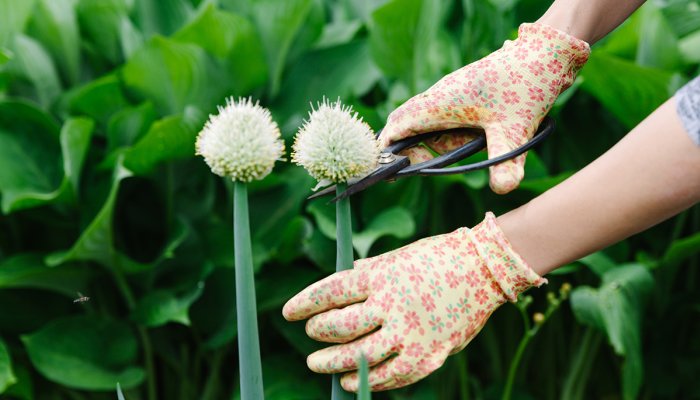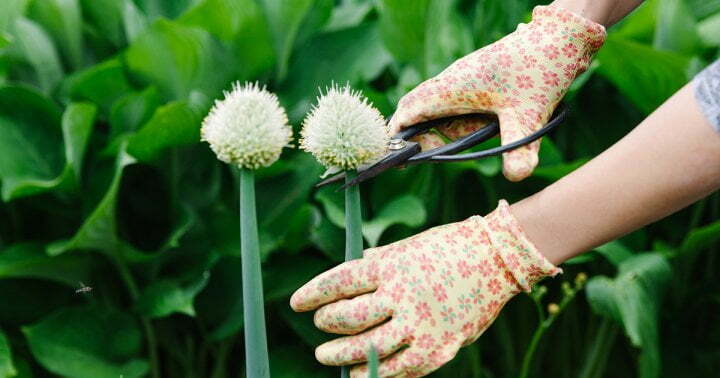This 2-Second Technique Makes Flowers Look More Full & Vibrant

Pinching is the easiest type of pruning. It’s usually done to help make young flower seedlings grow outward instead of upward and look more full. It can also help increase the yield of certain edible plants.
Here’s how it works: When you pinch a plant, you’re cutting off the top of its main stem, which ultimately encourages the rest of the plant to branch outward and grow new offshoots.
The plant biology that fuels pinching is actually pretty fascinating: Plants, like humans, are regulated by hormonal cues. One essential plant hormone is auxin, which regulates vertical growth and keeps stems extending upward. The is an energy-intensive process, so at the same time the hormone tells the plant’s main stem to keep going, it tells its lateral buds to take a break. When you snip off the top of certain flowers, it reduces the plant’s auxin levels and frees up some energy for those buds to break free and have their time in the sun.
Niki Irving, the founder of Flourish Flower Farm and author of Growing Flowers, explains how this process plays out in the garden, using zinnias as an example: “Zinnias will put up one central stalk; it’s trying to put out a flower as quickly as possible. With pinching, you snip that stalk off but leave all the sets of leaves at the bottom of the plant. That will cause the plant to branch out more, so rather than having one stem with a flower, you’ll end up with five.”
You’ll want to do this when your plant is in the seedling stage and has just reached about 12 inches tall. Cut off the top 3 to 4 inches with garden shears, leaving some leaf sets at the bottom. You should notice more side shoots start to form within a few days.
Though it depends on the plant you’re working with, you’ll usually only want to pinch each flower once. Don’t wait too long into the growing season to make your cut, though, as it will delay flowering a bit. Once a flower is cut down, it will usually go on to grow stronger stems through the rest of the season. (A nice lesson from plants, no?)
This article was originally published by mindbodygreen.com. Read the original article here.




